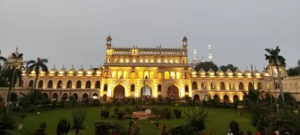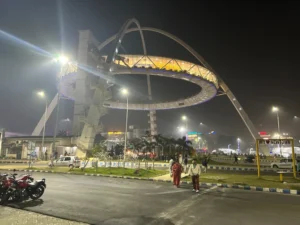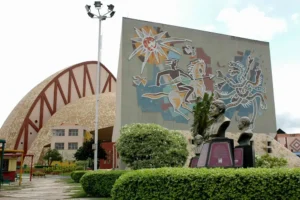“Amritsar is not just a place, it’s a feeling.”
This beautiful city in the state of Punjab, India, is famous for its delicious food, golden temples, and warm-hearted people.
Amritsar means “Pool of Nectar,” and it really feels magical when you visit! It’s a place where history, faith, and fun all come together.
Amritsar brims with history, culture, and spiritual vibes. The city houses the iconic Golden Temple and hosts the memorable Wagah Border ceremony. As you stroll its bustling streets, you’ll catch whiffs of tasty food and feel the locals’ friendliness. This post will guide you through the top sights, activities, and eats in Amritsar. Prepare to discover a place where old meets new in a stunning blend.
Best Season to Visit Amritsar:
Spring (February – March) – Tourist Season
- Temperature remains between 15°C to 25°C. The weather is cool and refreshing.
- Flowers bloom around the city. Great time for walking tours and street food.
- However, it can get a bit crowded as it’s peak travel season.
Summer (April – June)
- With temperature raising to 30°C to 45°C, it is best to avoid visiting during these months.
- Amritsar becomes very hot during the day, making sightseeing very uncomfortable in the heat.
- There are fewer tourists, so the places are quieter and less crowded.
- One can get discounts on hotels and flights.
Monsoon (July – September) – Cheaper alternative
- During the monsoon season, temperature remains between 25°C to 35°C.
- City looks green and fresh after rain.
- However, rain may affect your plans, roads can get muddy or slippery.
- Heavy rain may also affect train or flight.
- Due to less demand during the season, one can avail lower hotel prices.
Winter (October – January)
- Temperature drops to 5°C to 20°C.
- Mornings and nights are cold. Fog may delay trains and flights.
- Day temperature remains ideal for exploring and trying local food.
- Golden Temple looks beautiful in the winter mist.
- Festivals like Diwali and Lohri add charm.
Must visit Places in Amritsar
Golden Temple
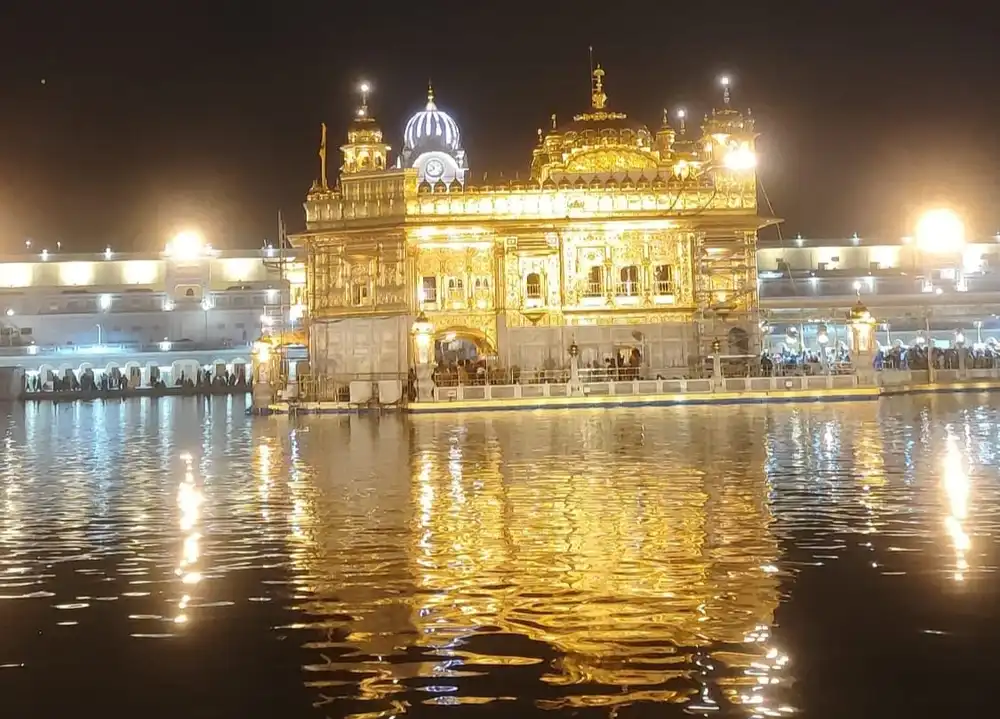
The Golden Temple, or Sri Harmandir Sahib, stands as Sikhism’s holiest site. Its gold-covered structure encircled by the tranquil Amrit Sarovar water tank, radiates a sense of spiritual power and serenity. People from across the globe flock to this place to pray, to ponder, or just to take in its splendor. The temple opens its doors to all regardless of their faith or origins.
The Akal Takht, which means “Throne of the Timeless One,” sits in the Golden Temple complex. It’s one of the five most important places in Sikhism. Guru Hargobind Sahib built it in 1606 to show the spiritual and political strength of Sikhs. The Golden Temple stands for peace and faith, while the Akal Takht represents fairness, bravery, and taking action.
You’ll find the Central Sikh Museum right next to it. This place shows paintings, weapons old writings, and rare photos. It tells you about Sikh gurus people who died for their beliefs, and the hard times Sikhs faced over hundreds of years. When you walk through the museum, you’ll learn more about what Sikhs believe in and how brave they are.

Make sure to check out the Guru ka Langar where they dish out free meals to thousands each day – all cooked and given out with care. To soak in the temple’s peaceful atmosphere, head there in the early hours or after sunset during the Palki Sahib ritual.
The Palki Sahib ritual is a beautiful and peaceful ceremony held every night at the Golden Temple. During this ritual, the Guru Granth Sahib (the holy book of the Sikhs) is respectfully carried in a decorated palki (palanquin) from the main shrine to the Akal Takht, where it rests for the night. Devotees sing hymns as they walk with the palki, and the atmosphere feels calm and spiritual. The ritual usually takes place around 9:30 to 10:00 PM, but it’s best to arrive early to get a good spot.
Jallianwala Bagh
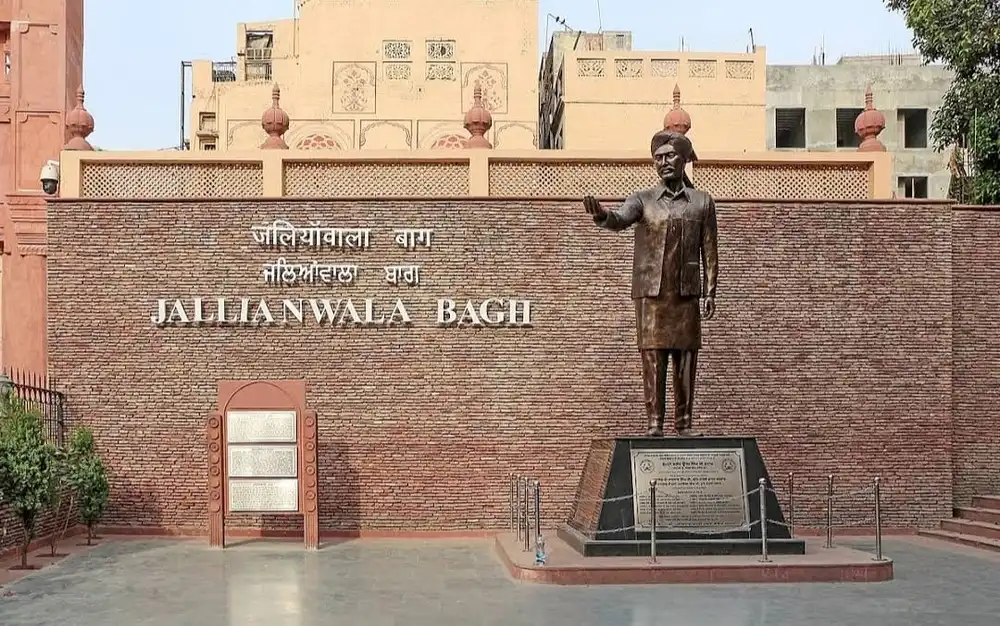
Just a short walk from the Golden Temple, Jallianwala Bagh is a quiet garden with a powerful story.
On April 13, 1919, British troops opened fire on a peaceful gathering here, killing hundreds of innocent people. The massacre shocked the nation and became a turning point in India’s struggle for independence.
Today, the site stands as a memorial to honor those who lost their lives. You can still see the bullet marks on the walls and visit the Martyrs’ Well, where many jumped to escape the firing.
The garden is peaceful, but the memories it holds are strong. Walking through it reminds every visitor of the cost of freedom.
- Entry Fee: free for all visitors.
- Timings: open daily from 6:30 AM to 7:30 PM.
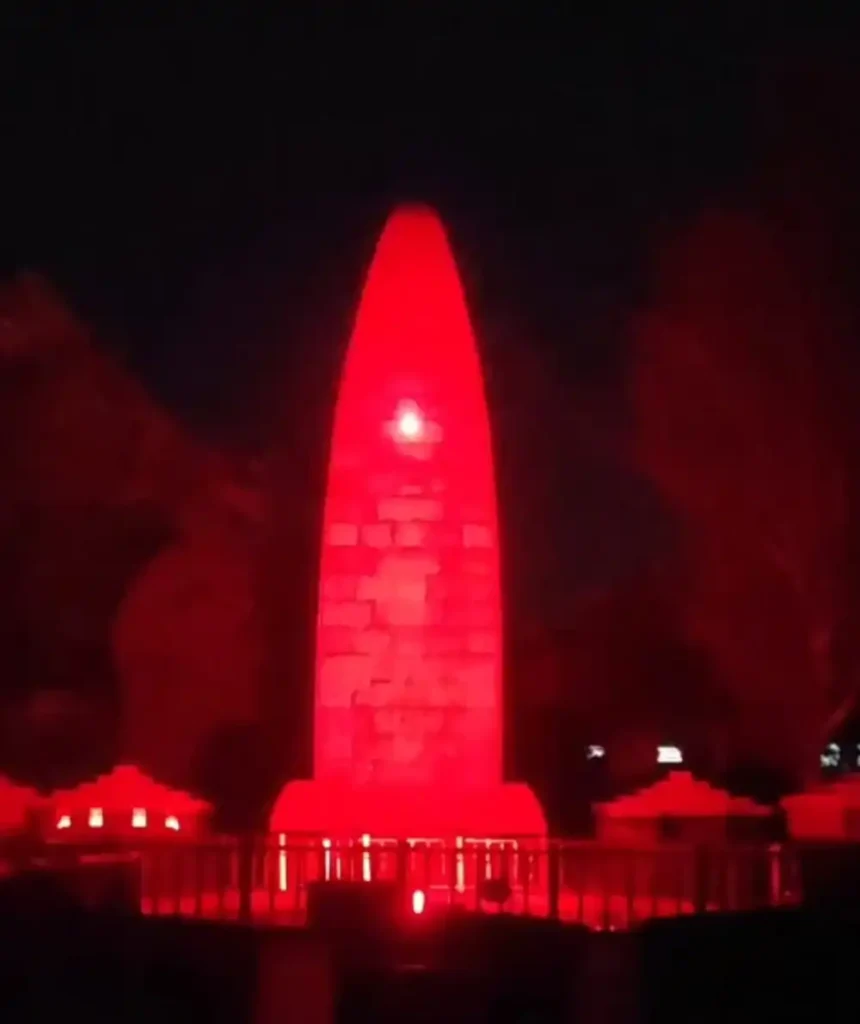
The Jallianwala Bagh Light and Sound Show in Amritsar is a poignant tribute to the tragic events of April 13, 1919. Narrated from the perspective of freedom fighter Udham Singh, with voiceover by Amitabh Bachchan, the show offers an immersive historical experience.
Show Timings and Details:
- Summer (April to September): 7:00 PM to 8:00 PM
- Winter (October to March): 5:00 PM to 6:00 PM
- The show lasts approximately 45 minutes to an hour.
- Admission to both the Jallianwala Bagh memorial and the Light and Sound Show is free of charge .
- The show is available in both Hindi and English.
Partition Museum
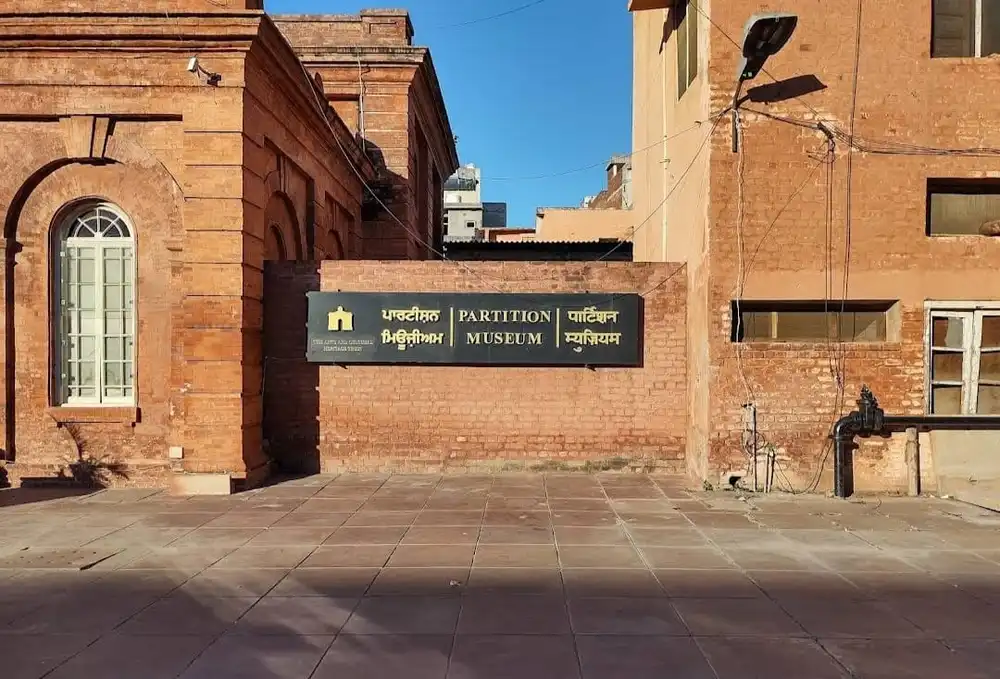
Amritsar’s Partition Museum takes visitors on a touching exploration of the 1947 divide of India. You’ll find it in the old Town Hall along Heritage Street where it’s known to be the first museum on the globe to conserve tales and objects from those meaningful times.
The museum features multiple galleries that chronicle the events leading up to, during, and after the Partition, showcasing photographs, newspaper clippings, and personal belongings donated by survivors.
Peace Gallery: A dedicated space emphasizing unity and harmony post-Partition.
Interactive Exhibits: Modern installations that engage visitors, providing a deeper understanding of the Partition’s impact.
Timings: Tuesday to Sunday, 10:00 AM – 6:00 PM. Mondays closed.
Entry Fees: ₹10 (Indian), ₹250 (foreigner), Free (Children 5 years and below)
Photography: Not permitted inside the museum.
Wagah Border Retreat Ceremony

Every evening, the Wagah Border comes alive with the electrifying Retreat Ceremony, a powerful display of patriotism and discipline. Soldiers from India’s Border Security Force and Pakistan’s Rangers march in perfect sync, exchanging sharp salutes and powerful foot stomps. The crowd cheers with nationalistic pride as flags are lowered simultaneously on both sides, symbolizing respect and rivalry. Loud chants of “Bharat Mata Ki Jai” and “Vande Mataram” echo across the arena, adding to the charged atmosphere. This daily ceremony not only showcases military precision but also reinforces the spirit of unity and pride among spectators.
- Carry sunglass, hat to protect against afternoon sun.
- The ceremony starts around 4PM and happens till 5:30PM.
- People start filling the seat from around 2PM, so during tourist season one might need to arrive early.
Gobindgarh Fort
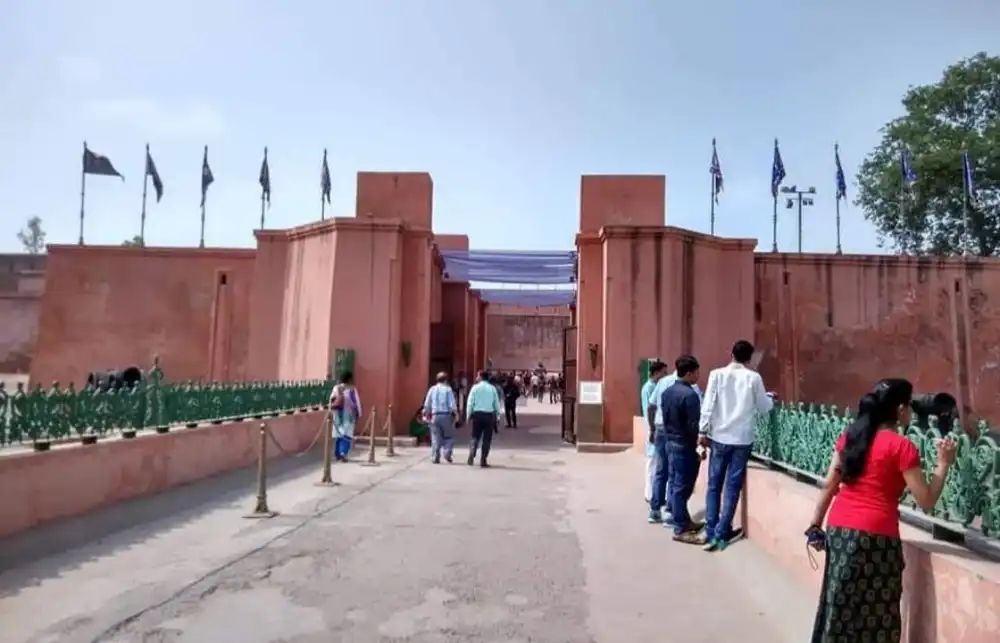
Gobindgarh Fort stands tall, a proud emblem of Punjab’s deep history and tough spirit. Maharaja Ranjit Singh built it in the 18th century. This fort used to protect Amritsar and it once kept the famous Kohinoor diamond safe. Now, it opens its doors for folks to come and get a taste of culture, traditions, and fun. You’ve got live acts local dances, and 7D shows that make the old stories come alive. Museums inside tell you about brave deeds and what’s been handed down through the years. With its grand buildings and stuff you can dive into, Gobindgarh Fort makes sure you feel connected to the awesome history of Punjab.
Timing: Daily from 10:00 AM to 10:00 PM
Tickets are available until 4:00 PM
Ticket prices vary based on the chosen package and nationality:
1. General Combo – Includes fort entry, Pagdi Museum, 7D show on Maharaja Ranjit Singh, and cultural performances like Bhangra and Gatka. ₹180 (Indian), ₹375 (foreigner)
2. Express Super Pass – Offers all features of the General Combo plus the Whispering Walls light and sound show, children’s rides (e.g., camel rides, Segway), and Punjabi cuisine from Ambarsari Zaika and Zaika Gali. ₹649 (Indian), ₹1000 (Foreigner)
Whispering Walls (Light & Sound Show): First show at 7:00 PM (Punjabi), second at 7:45 PM (English).
Pagdi Museum & Sikh Art Museum: 10:00 AM – 7:30 PM
Toshakhana & War Museum: 10:00 AM – 7:00 PM
For more details on the fort, you can visit the official page on the District Amritsar website https://amritsar.nic.in/tourist-place/gobindgarh-fort/
Durgiana Temple

The Lakshmi Narayan Temple often called the Durgiana Temple, sits in Amritsar Punjab as a key Hindu worship spot. Back in 1921, Harsai Mal Kapoor constructed it where an old shrine used to be one that historians say dates to the 16th century at least. It echoes the Golden Temple in its design with a shiny dome and a holy pool that boosts the place’s sacred feel.
The foundation stone of Shri Durgiana Temple was laid by Pandit Madan Mohan Malviya in 1924 on the day of Ganga Dashami (Dussehra). The temple existed before it was rebuilt in 1921. Dedicated primarily to Goddess Durga, this spot also features figures of Lord Vishnu and Lord Krishna drawing in crowds of faithful visitors. You’ll find a big sarovar, which is a holy pond, and a marble walkway wraps around it giving folks a calm spot to pray.
The Durgiana Temple is open daily from 5:00 AM to 9:00 PM, and there is no entry fee for visitors .
Photography is generally permitted in the outer areas, but it’s advisable to refrain from taking pictures inside the sanctum sanctorum to maintain the sanctity of the space.
To learn more about the history of the temple, one can visit the official website of Shri Durgiana Temple.
Ram Bagh Gardens & Maharaja Ranjit Singh Museum
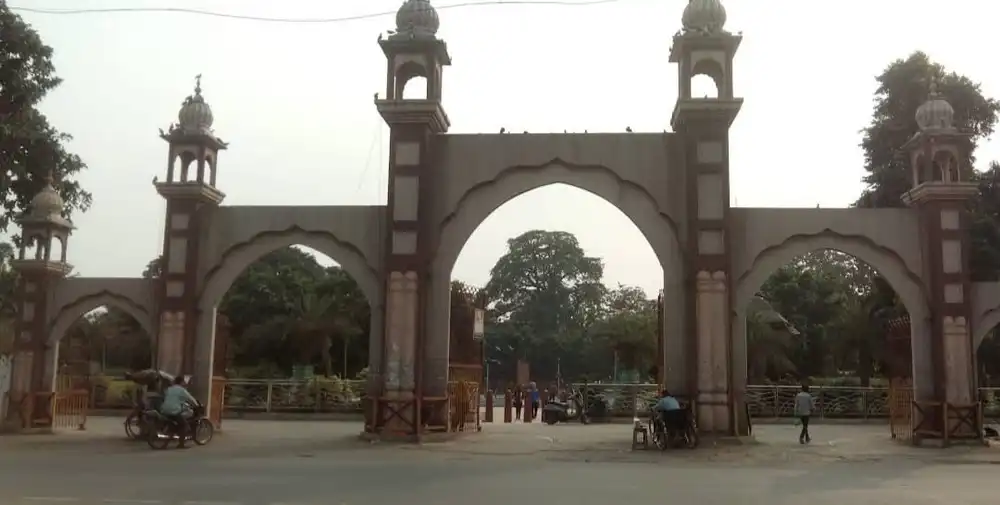
Originally established as the summer residence of Maharaja Ranjit Singh, Ram Bagh Gardens—also known as Company Bagh—spans a vast area adorned with lush greenery, fountains, and colonial-era structures. The garden is open daily from 10:00 AM to 5:00 PM, and entry is free. Within the garden, visitors can explore the Maharaja Ranjit Singh Museum, which charges a nominal entry fee of ₹10 per person.
Housed within the summer palace of the first king of the Sikh Empire, the Maharaja Ranjit Singh museum offers a glimpse into the life and legacy of Maharaja Ranjit Singh. Exhibits include paintings, manuscripts, coins, and weapons from the 18th and 19th centuries.
The museum operates from 10:00 AM to 5:00 PM, Tuesday through Sunday, and is closed on Mondays and public holidays.
The entry fee is ₹10 per person.
Both sites are conveniently located near the city center and are easily accessible by local transportation. A visit to Ram Bagh Gardens and the Maharaja Ranjit Singh Museum offers a serene escape and a deep dive into Punjab’s rich history.
Delicacy of Amritsar

Amritsari Kulcha
It is a crispy, stuffed bread (staffed usually with potatoes, paneer, or onion) served with chole (chickpeas), chutney, and onions.
Where to try: Kulcha Land, Brothers Dhaba, or All India Famous Amritsari Kulcha.
Butter Chicken
Butter Chicken, also known as Murgh Makhani, is a rich, creamy, and mildly spiced Indian curry made with tender pieces of grilled or roasted chicken simmered in a buttery tomato-based sauce. It’s one of the most iconic dishes of Punjabi cuisine and is loved globally for its luxurious flavor and comforting texture.
Here’s where you should go to taste the best butter chicken in the city:
1. Beera Chicken House for their smoky, rich flavour and full of authentic Punjabi punch
2. Crystal Restaurant on Cooper Road for their mildly spiced, and creamy.
3. Adarsh Meat Shop on the Ranjit Avenue – More like a hidden gem — hole-in-the-wall vibes but unforgettable butter chicken. Spicy, tangy, and deeply satisfying.
4. Charming Chicken (Lawrence Road) – They serve a spicy, bold version of butter chicken with a smoky finish. Locals love it for its fiery twist on the classic.
Chole Bhature
Spicy chickpeas served with fluffy bhature.
Try this famous delicacy at Kanha Sweets or Bharawan Da Dhaba.3
Amritsari Fish Fry
If you are craving for some deep-fried snacks, try Amritsari spicy marinated fish which is crispy outside, tender inside.
You can try this at Makhan Fish & Chicken Corner or Beera Chicken House.
Lassi
Lassi isa a sweet or salty churned yogurt drink, often topped with cream or butter. Amritsar is known for it’s lassi.
Check out Gian Chand Lassi Wale near Hall Bazaar or Ahuja Milk Bhandar for their delicious lassi.
Some Facts About Amritsar
Home of the Golden Temple: The famous Sri Harmandir Sahib (Golden Temple) is one of the most peaceful and beautiful places in the world. It shines like gold and welcomes everyone with open arms!
Free Meals for All: The Golden Temple serves langar (a free vegetarian meal) to nearly 100,000 people every day — and it’s all made with love by volunteers!
Wagah Border Ceremony: Just outside the city, you can watch the Wagah Border parade — an exciting and energetic event where India and Pakistan soldiers show off their moves!
Yummy Punjabi Food: From buttery parathas to creamy lassi, the food in Amritsar is super tasty. Don’t miss the famous Amritsari kulcha!
Jallianwala Bagh: A quiet garden today, but once a place of great courage. It tells an important story about India’s fight for freedom.
Read More: Science City Kolkata: Exploring the Wonders of Science and Innovation
FAQs about Amritsar
Amritsar is in the northern part of India, in the state of Punjab, near the India-Pakistan border. It’s well-connected by train, road, and air, so getting here is usually pretty easy.
Amritsar is known for its history, hospitality, and food. The city is home to the stunning Golden Temple, the powerful Jallianwala Bagh, and the thrilling Wagah Border ceremony. It’s also the heart of Punjabi culture, so expect warmth, color, and lots of flavor!
The Golden Temple (Sri Harmandir Sahib) is a sacred place for Sikhs and one of the most peaceful places you’ll ever visit. Yes — everyone is welcome, no matter your background or religion.
Before entering:
1. Remove your shoes
2. Cover your head (scarves are provided)
3. Wash your hands and feet
4. Stay calm and respectful
The serene vibe, shimmering golden dome, and kindness of the volunteers make it an unforgettable experience.
Langar is a free community meal served at the Golden Temple — and yes, you’re warmly invited to join! The food is simple, tasty, and cooked with love by volunteers. Sitting together and sharing a meal with people from all walks of life is a beautiful experience.
Yes, Amritsar is generally a safe and friendly city, especially for families. The locals are warm and helpful. Just take usual travel precautions, watch your belongings in crowded places, and stay hydrated in the heat.
The Wagah Border is where India and Pakistan meet, and each evening, both countries put on a fun, patriotic parade. It’s full of energy, claps, flag-waving, and high kicks. Families and kids love it — just try to arrive early for good seats!
Not everything is spicy, and many restaurants offer mild versions if you ask. Some must-try dishes:
* Amritsari kulcha (crispy stuffed bread)
* Chole (spiced chickpeas)
* Butter chicken
* Paneer tikka
And of course, the famous sweet lassi
There’s something for every taste — from rich and creamy to tangy and crisp.
Wear comfortable, modest clothing, especially if you’re visiting temples. Covering shoulders and knees is a good idea. Carry a scarf (for your head at religious places), wear easy-to-remove footwear, and pack a light jacket in cooler months.
Absolutely:
* Start your day early to avoid crowds at the Golden Temple.
* Stay hydrated and wear sunscreen if it’s sunny.
* Be ready to walk — the old city is best explored on foot.
* Learn a few local words like “Sat Sri Akal” (hello) — people love it!
* Don’t rush. Amritsar is best enjoyed slowly, with all your senses.

